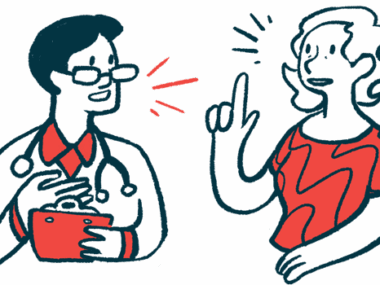CSS still relevant at assessing Rett syndrome disease severity, concerns
Scores from patients enrolled in natural history study were analyzed
Written by |

“The Clinical Severity Scale (CSS) remains a relevant tool in assessing disease severity in Rett syndrome as it reflects core clinical criteria and mirrors concerns from parents or caregivers, but its role in gauging outcomes is limited, a study suggests.”
CSS “continues to be important in correlating clinical outcome with MECP2 variants, as well as providing a useful measure for entry into clinical trials,” the study’s researchers wrote. The study, “Symptom Onset in Classic Rett Syndrome: Analysis of Initial Clinical Severity Scale Entries,” was published in the Annals of the Child Neurology Society.
Rett syndrome typically manifests after a normal early development, with stagnation and regression in motor skills and communication occurring between 6 and 18 months. It almost exclusively affects girls, with symptoms that include cognitive, sensory, emotional, and motor disturbances. The disease is chiefly caused by mutations in the MECP2 gene, which disrupts the MeCP2 protein that’s crucial for brain development and functioning.
The CSS includes 13 items, with a cumulative score that ranges from 0 to 58, with higher scores indicating greater disease severity. Since its establishment in 2000, the scale has been modified to enhance its clarity, and has been used to assess disease severity in Rett and related disorders, aiding clinical trials and natural history studies, which are those that track disease progression in the absence of treatment.
Age at onset of regression, onset of repetitive hand movements, called stereotypies, and head growth (circumference) are the first three (historical) items, and are expected to remain stable over time. The remaining 10 items are evaluated at each clinical assessment.
The stability of the first three items, which account for nearly 25% of the total score, restricts the scale’s ability to track clinical outcomes over time, the scientists said. Despite this, CSS data may help validate clinical features of Rett and evaluate individual characteristics among patients.
Analyzing CSS scores in Rett syndrome
Here, researchers in the U.S. analyzed CSS scores at patients’ enrollment into a natural history study sponsored by the National Institutes of Health that was terminated in 2021. The analysis included data from 1,258 people with classic Rett who completed at least one CSS assessment. The first evaluation was done at an average age of 10.4. The CSS total score ranged from 5 to 45, with a mean of 22.5.
The researchers first reviewed the three historical items of the CSS. More than 80% of patients began showing regression between 12 and 30 months, while 36.2% regressed between 12 and 18 months, and 46.1% regressed from 18 to 30 months. About 10% regressed either before 12 months or after 30 months.
Stereotypic behaviors typically began between 18 to 36 months (55.6%), with 22.7% starting between 12 and 18 months.
The results also showed that 27.6% of patients had a normal head size, while 28.6% demonstrated an abnormally small head, called microcephaly, by age 2, and 30.4% had a head circumference in the lower percentiles. These findings validate removing microcephaly from recent Rett diagnostic criteria, as head sizes were within the normal range for about a quarter of the patients.
The first physical exams showed most patients had normal growth and could sit independently. However, 21% were below the 5th percentile for growth and more than 27% had delays in sitting. Another 11.5% lost this ability.
Significant delays in walking were seen in more than 70%, with nearly all having abnormal hand function, aligning with key diagnostic criteria for classic Rett. Notably, 27% were able to walk, but the scale doesn’t assess walking quality.
While most didn’t show signs of scoliosis, almost 35% had an abnormal curvature of the spine. Language development was delayed in nearly all the patients, while 90% had difficulty with nonverbal communication. The inability to communicate properly was the key concern for parents.
Around 50% exhibited breath holding or hyperventilation, which is abnormal breathing that involves rapid and deep breaths. “This is a critical issue for parents and caregivers as well, as it can interfere significantly with mealtimes and therapy in the school or home settings,” the scientists wrote. About 60% demonstrated abnormal autonomic function with cold hands and/or feet, while less than 40% had epilepsy, which differs from the anticipated lifelong prevalence of 90%. Still, this supports other reports that indicate the onset of seizures is more frequent after age 5, said the investigators, who said the “CSS provided important indicators of specific involvement that correlate with clinical outcomes.”
“The range of age‐specific CSS features will continue to inform the [Rett] natural history, as well as provide stratification and selection in future clinical trials, especially those involving younger participants,” they wrote.






